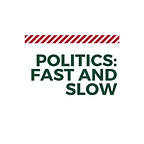The Good and the Bad from Chequers
After a 12-hour-long meeting with Cabinet ministers at her country residence on Friday, Theresa May emerged with a view of the UK’s negotiating position on future arrangements with the EU. The plan includes a common market for free trade for agricultural and industrial goods, which is to be created by a common rulebook between the UK and the European trade bloc, and also sets out a framework in which EU migrants to the UK would be given special rights to enter.
The Prime Minister appears to have accomplished a number of objectives with regard to Brexit, politics, and her own party. For example, she has set out a plan to fulfil the manifesto commitment to leave the single market and customs union, in order to adhere to the ‘will of the people’. The plan also unites most of the Cabinet and the vast majority of her party, with Brexiteers such as Michael Gove and pro-European ministers such as Philip Hammond all backing the deal, with only a few exceptions (cough, Boris, cough). In fact, Theresa May appears to have done incredibly well, with Michael Gove seeming to back the idea of a Super Canada deal, but only shying away from requesting it due to its lack of viability in getting through Parliament. Perhaps most importantly, the plan sees the issue of the Northern Ireland border largely resolved, which was all the more crucial due to the government’s supply-and-confidence arrangement with the DUP in Parliament.
Particularly though, the meeting at Chequers, which, from accounts of Cabinet ministers, included huge debate and…
